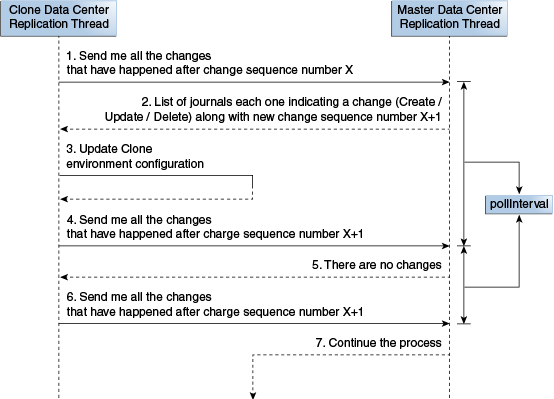19.3 Synchronizing Master and Clone Metadata
The process for syncing metadata across an MDC involves first syncing Access Manager UDM metadata and then creating a replication agreement.
See Understanding the Replication Agreement.
The following topics describe how to synchronize master and clone metadata:
19.3.1 Synchronizing the UDM Metadata
You must synchronize the UDM Metadata before you can create the replication agreement.
To sync Access Manager UDM metadata stored in the Master to all Clones:
19.3.2 Creating a Replication Agreement
Creating a Replication Agreement is a one time operation which will enable the Clone data center(s) to pull changes from the Master data center.
The replication agreement can be created using any REST client. In this procedure, we use the standard Curl utility.
After you execute this command, the following results occur:
-
Insert an entry in the Master's Replication Agreement store containing details regarding the Clone that wants to pull changes.
-
Insert an entry in the Clone's Replication Agreement store containing details regarding the Master from which it will pull changes. Replication configuration values like the poll interval will also be set.
To create a replication agreement:
19.3.3 Modifying a Replication Agreement
In this example, the value of pollInterval will be changed to 60 seconds.
Service responds back with JSON object that is the status of replication agreement before making the change. You need to fetch replication agreement status again to see updated configuration.
